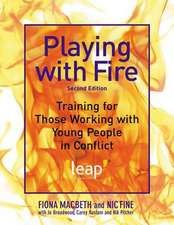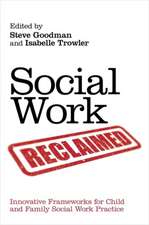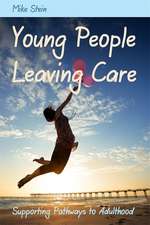Are You Okay?: A Practice Guide to Helping Young Victims of Crime
Autor Pete Wallisen Limba Engleză Paperback – 4 mai 2010
Preț: 108.56 lei
Preț vechi: 130.55 lei
-17% Nou
Puncte Express: 163
Preț estimativ în valută:
20.77€ • 21.69$ • 17.19£
20.77€ • 21.69$ • 17.19£
Carte disponibilă
Livrare economică 14-28 martie
Preluare comenzi: 021 569.72.76
Specificații
ISBN-13: 9781849050982
ISBN-10: 1849050988
Pagini: 224
Ilustrații: 6
Dimensiuni: 150 x 226 x 14 mm
Greutate: 0.34 kg
Editura: Jessica Kingsley Publishers Ltd
Locul publicării:United Kingdom
ISBN-10: 1849050988
Pagini: 224
Ilustrații: 6
Dimensiuni: 150 x 226 x 14 mm
Greutate: 0.34 kg
Editura: Jessica Kingsley Publishers Ltd
Locul publicării:United Kingdom
Notă biografică
Pete Wallis is Senior Practitioner (Restorative Justice) for Oxfordshire Youth Offending Service UK and a founding member of the charity SAFE! Support for young people affected by crime. He has written and co-written several books on restorative justice and related topics for JKP.
Cuprins
Acknowledgements. Introduction. Key Concepts: Protective Behaviours and Restorative Approaches. Part 1. 'What happened?' The crimes and their consequences. 1. The crimes. 2. Indirect victimization or 'hidden harm'. 3. Understanding the effects of crime and recognizing the signs. Part 2. 'You are not alone' stepping in to help. 4. Raising the issue and responding well. 5. Assessment, confidentiality and reporting. Part 3. 'What will happen now?' The criminal justice system. 6. A swift navigation through the criminal justice system. 7. Restorative approaches. 8. The overlap between offending and victimization. 9. Next steps. Conclusion. Resources. Index.












